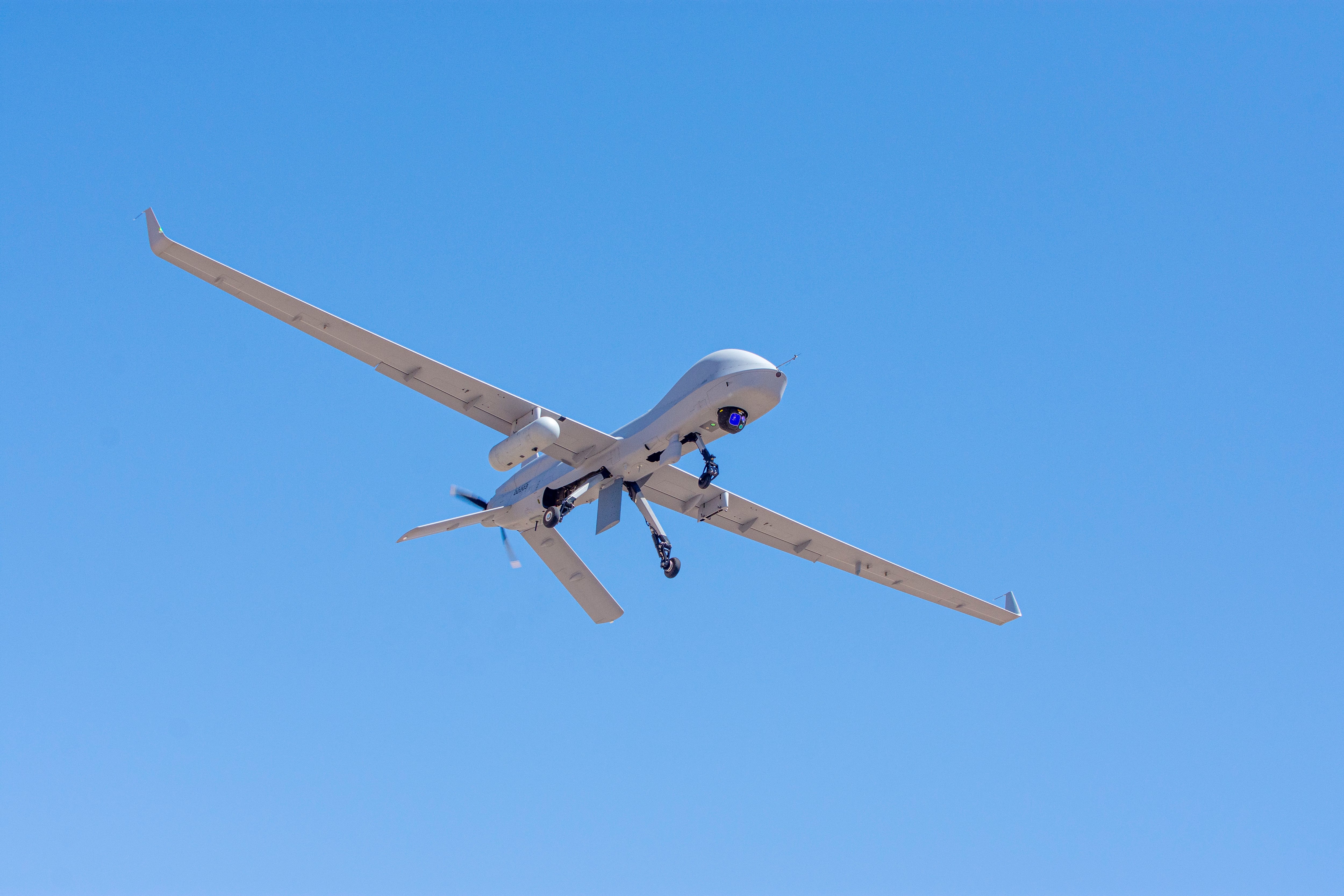ST. LOUIS — Since taking over operational control of the Defense Department’s most prominent artificial intelligence tool in January, the National Geospatial-Intelligence Agency has made “important strides” toward improving geolocation accuracy, detecting targets and automating work processes, according to its director.
Project Maven was created in 2017 to take data, imagery and full-motion video from uncrewed systems, process it and use it to detect targets of interest. The agency announced last year it would oversee operations of the program — which had been managed by the Under Secretary of Defense for Intelligence and Security — but a protracted fiscal 2023 budget cycle pushed that official transition to the beginning of this year.
“The bottom line here is that under NGA’s watch, Maven . . . has made some significant technological strides and has already contributed to some of our nation’s most important operations,” Vice Admiral Frank Whitworth said May 22 at the GEOINT Conference in St. Louis.
Within the intelligence community, NGA is the lead for processing and analyzing satellite and other overhead imagery as well as mapping the Earth. Some portions of Project Maven that do not pertain to GEOINT have shifted to the Pentagon’s Chief Digital and Artificial Intelligence Office. The effort is not yet a formal program, though the agency expects to achieve that milestone this fall.
In a briefing with reporters following his speech, Whitworth declined to offer details on how Project Maven is being used due to security concerns. He did say that military commanders are “really excited” about the tool’s growth and the agency is expanding its collaboration with academia and industry as they continue to develop the system.
Mark Munsell, NGA’s director of data and innovation, said the agency’s primary charge within Project Maven is to increase the quality of AI and machine learning algorithms and, as a result, improve their ability to detect targets within imagery.
NGA has used scenarios in the ongoing war in Ukraine to improve the AI algorithms used by Maven and other programs, he said. For example, the agency hasn’t typically trained its AI models to recognize destroyed equipment. But that information has proved relevant in Ukraine, Munsell said, and NGA is now training its models for those scenarios.
Courtney Albon is C4ISRNET’s space and emerging technology reporter. She has covered the U.S. military since 2012, with a focus on the Air Force and Space Force. She has reported on some of the Defense Department’s most significant acquisition, budget and policy challenges.








